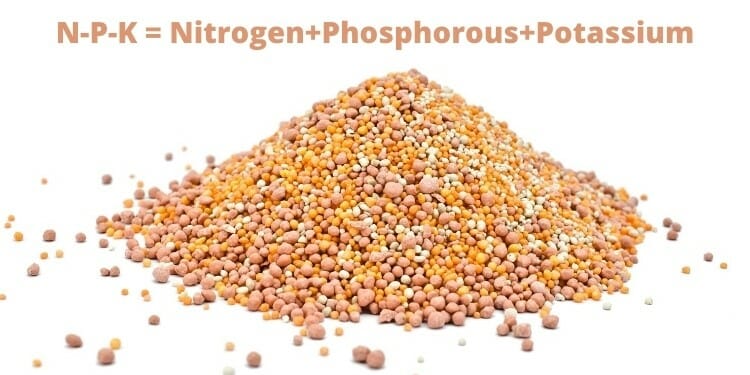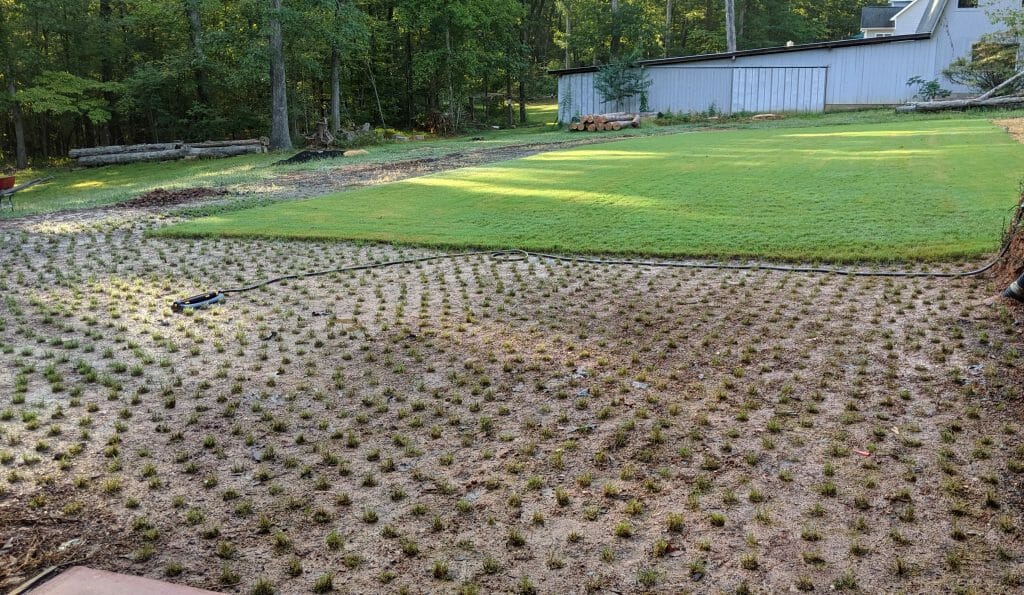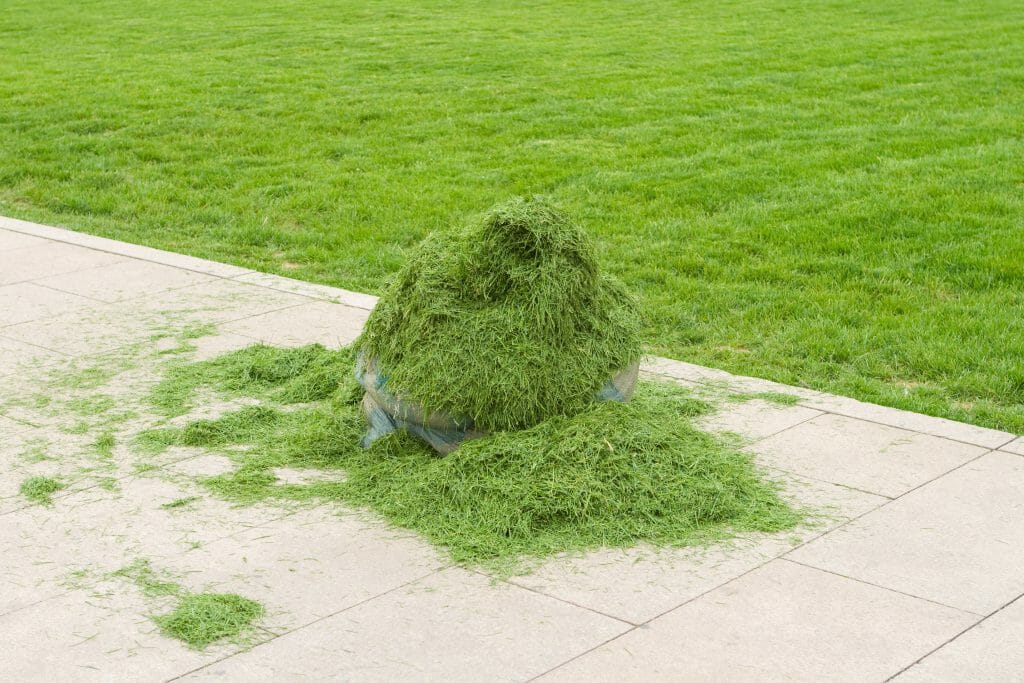If you’re planting out a new lawn, you may be asking how often to apply starter fertilizer. This type of fertilizer is required to get your new grass off to a good start. It ensures that there are enough nutrients available to the young plants to encourage optimum growth.
So, what is starter fertilizer and why is it important?
What Is Starter Fertilizer?
Most lawn starter fertilizers contain varying amounts of nitrogen, phosphorous and potassium (NPK). This is important for good grass establishment. The nitrogen promotes good growth and a healthy green color. Phosphorous is important for good root development and potassium helps the grass develop drought tolerance, good disease resistance and hardiness.
Therefore, when choosing a suitable fertilizer for your new lawn, check out the NPK rating on the pack. It should have more nitrogen and phosphorous than potassium. This is because the quick release of the nitrogen in these fertilizers allows the grass seeds to absorb more potassium (learn how to add potassium to your soil here).
There is quite a wide variation available in commercial fertilizer, so we’ve compiled a table on the most commons brands.
| Fertilizer Brand | N-P-K Ratio |
| Scotts Turf Builder | 24-25-4 |
| Greenview Starter Fertilizer | 10-18-10 |
| Jonathan Green Green-Up | 12-18-8 |
| Lesco Professional Starter Fertilizer | 18-24-12 |
| The Andersons New Lawn Starter | 20-27-5 |
| Ferti-Lome New Lawn Starter Fertilizer | 9-13-7 |
| Sustane Late Summer Turf Starter | 4-6-4 |
As you can see, most of these starters focus heavily on phosphorous to promote good root growth. The reason that some have low level of potassium, on the other hand, is because this nutrient is also generally associated with flowering and fruiting of ornamental and edible plants. Therefore, it’s not as important to lawn growth.
It Might Be A Good Idea To Get Your Soil Tested First
Before you choose a starter fertilizer for your new lawn, it might be prudent to get your soil tested. This test will indicate the levels of nitrogen, phosphorous and potassium in your soil.
Consequently, it will help you make a better decision as to which fertilizer to choose. Whether you’re seeding or laying turf is also a determining factor.
For seeding, you need much closer levels of nitrogen and phosphorous for the young plants to develop. When laying turf, on the other hand, a greater amount of phosphorous is needed. This is because the turf’s roots have been cut and therefore, need a little extra help to establish quickly.
Applying The Fertilizer
Once you’ve decided which fertilizer is best for your own situation, it’s time to apply it correctly. Ideally, you should add the nutrients to the soil before you seed or lay your turf.
If you apply the fertilizer to newly laid turf, the nitrogen could easily burn the grass if it’s not watered in sufficiently. Follow the application guides on the pack but ideally, you should apply around 0.5 to 1 pound of nitrogen per 1000 square feet.
If you apply too much nitrogen it can burn your new grass or worse still, get washed into the storm water drains and end up polluting your local waterways.
DON’T MISS: Learn how rain timings can affect when you should, and shouldn’t use fertilizer.
So, How Often Should You Apply Starter Fertilizer?
Ideally, your new lawn should only need 1 applications of starter feed. This is applied to the soil before you seed or lay your turf. Then, once the grass is starting to grow, you can apply a second dose of regular fertilizer, which is higher in nitrogen, around 4 to 6 weeks later. Wait until the grass is about 1 to 1 ½ inches tall.
This will promote really good root growth and give your lawn adequate time to establish itself.
After that, you can re-apply the regular fertilizer to promote good growth and color all year round. But wait at least another 6 – 8 weeks. And, if you can use an organic fertilizer, it would be even better.
Finally, you can apply fertilizer to your new lawn in fall, before there is any danger of frost or snow. You can use a fertilizer slightly higher in phosphorous for this as it will promote deep root growth to sustain your lawn over winter. Most lawns will remain dormant over winter and don’t need too much attention.
Once spring has arrived, it’s time to give your lawn a boost by once again applying a nitrogen rich fertilizer to encourage fresh, new growth.
Can You Use Compost Instead Of Commercial Fertilizer For A New Lawn?
If you have a good supply of compost on hand, you can work this into the soil before planting your new lawn. This will provide enough nitrogen and phosphorous for your new turf to establish itself. It’s even better if you can use a manure based compost.
In fact, if you live in an area where it’s not possible to control runoff, this is a much better option.
Frequently Asked Questions:
Should I fertilize or seed first?
When seeding a new lawn, you should apply the fertilizer to the soil before scattering the seeds. Alternatively, it is acceptable to mix the seed with the starter fertilizer and broadcast them at the same time.
What’s the difference between starter fertilizer and regular fertilizer?
As discussed above, starter fertilizer contains higher levels of phosphorous to promote good root development. On the other hand, regular fertilizer contains a higher level of nitrogen for good plant growth and green color.
How soon can I fertilize after overseeding?
If you are overseeding an existing lawn, you should do so about 3 – 4 days after you’ve applied a regular lawn fertilizer. Alternatively, if your soil is low in phosphorous, you can apply a starter fertilizer before or immediately after seeding to give your new seedlings a boost once they germinate.






